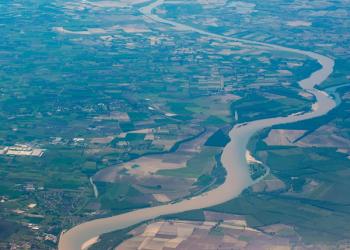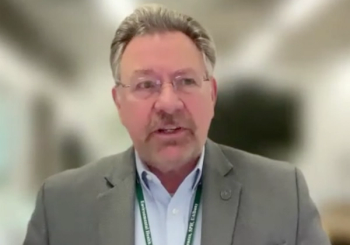
Polymer Characterization of Plastic Litter Using ATR-FT-IR Spectroscopy: An Interview with Monica Arienzo
Monica Arienzo, an associate research professor in the Division of Hydrologic Sciences at the Desert Research Institute, and her team recently used ATR-FT-IR to determine the polymer composition of plastic litter recovered by scuba divers from the lakebed of Lake Tahoe. Spectroscopy spoke to Arienzo about the significance of her work and how spectroscopy can be used to help monitor plastic litter in the environment.
Lake Tahoe is a large freshwater lake in the Sierra Nevada mountains. Known for its crystal-clear waters and panoramic vistas, it is a popular vacation spot for tourists seeking outdoor adventure. But because it is a popular vacation spot, the increase of tourists flocking to the area increases the likelihood that more plastic litter will end up in Lake Tahoe’s lakebed, threatening the aquatic environment of the lake as well as the surrounding area.
Monica Arienzo, an associate research professor in the Division of Hydrologic Sciences at the Desert Research Institute, and her team recently used attenuated total reflection Fourier transform infrared spectroscopy (ATR-FT-IR) to determine the polymer composition of plastic litter recovered by scuba divers from the lakebed of Lake Tahoe (1).
Arienzo earned her doctoral degree in Marine Geology and Geophysics from the University of Miami. Her research interests include developing a better understanding of the impact humans have had on the environment. She spent the beginning of her career studying caves in the Bahamas and ice cores from Antarctica before transitioning to studying microplastics found in snowy peaks, downstream lakes and rivers, and drinking water taps.
Spectroscopy spoke to Arienzo about the significance of her work and how spectroscopy can be used to help monitor plastic litter in the environment.
In this video interview, Arienzo answers the following questions:
- Your study assesses the plastic litter collected from Lake Tahoe by type and polymer characterization. What question was your study seeking to answer from the previous study conducted by Clean Up the Lake (CUTL)? (00:16 – 03:30)
- Your study suggested that Lake Tahoe’s lakebed may “act as a sink for litter” (1). Can you expand on the meaning this statement? (03:30 – 05:06)
- You and your team conducted polymer characterization by using attenuated total reflection Fourier transform infrared spectroscopy (ATR-FT-IR) analysis. Why did you select ATR-FT-IR as the technique to use for the analysis that you were conducting? (05:06 – 06:08)
- Can you describe the correlation between litter categories and polymer type? Does a correlation exist relative to global polymer production? (06:08 – 09:00)
- Can you summarize the results that your team collected? Were there any results that surprised you and your team? (09:00 – 11:40)
- What was unique about your study compared to previous studies? What conclusions should be taken from your study? (11:40 – 14:03)
To view our other video content, click on this link here:
Reference
(1) Davidson, J.; Arienzo, M. M.; Harrold, Z.; West, C.; Bandala, E. R.; Easler, S.; Senft, K. Polymer Characterization of Submerged Plastic Litter from Lake Tahoe, United States. Appl. Spectrosc. 2023, ASAP. DOI:
Newsletter
Get essential updates on the latest spectroscopy technologies, regulatory standards, and best practices—subscribe today to Spectroscopy.




